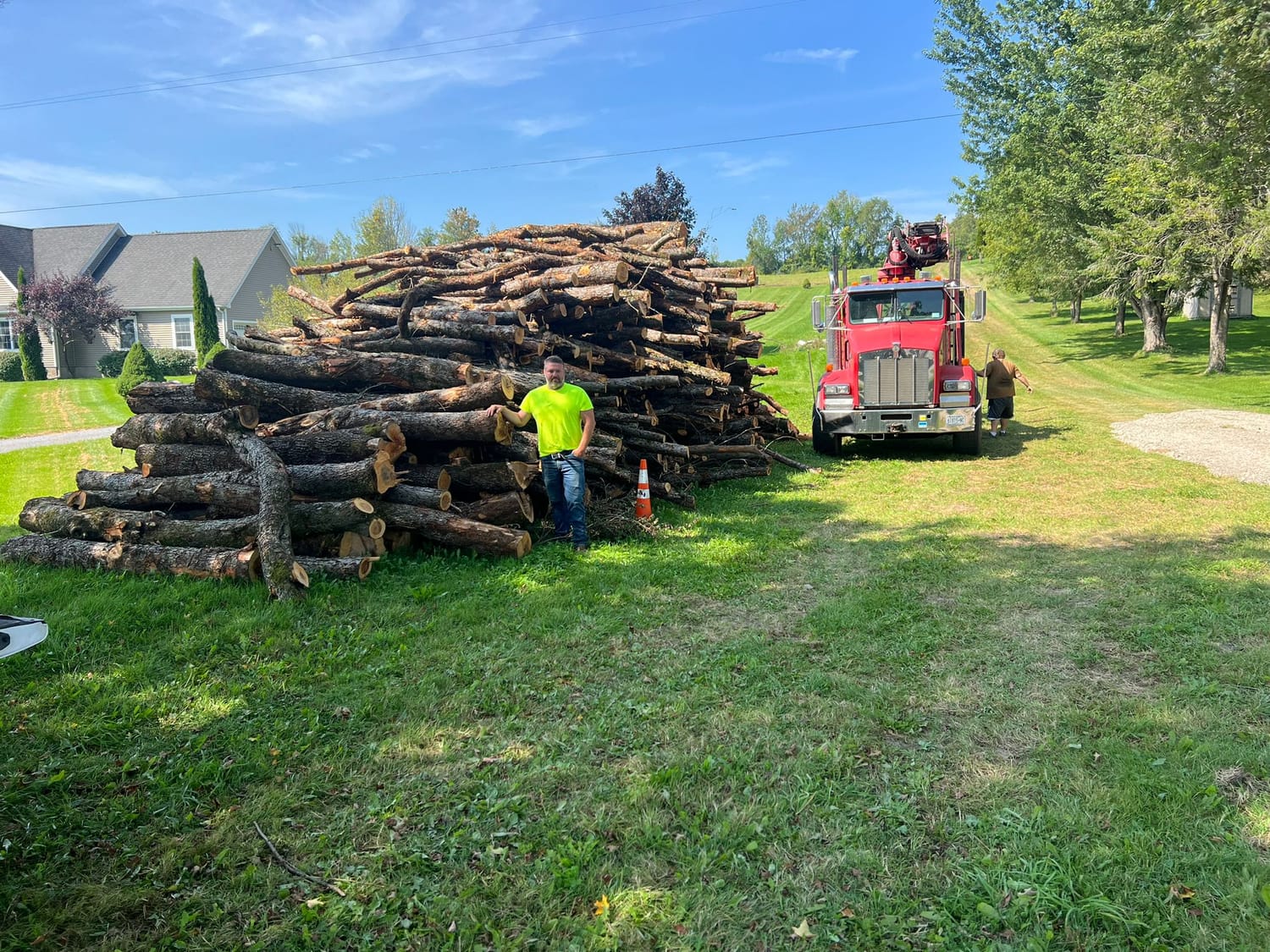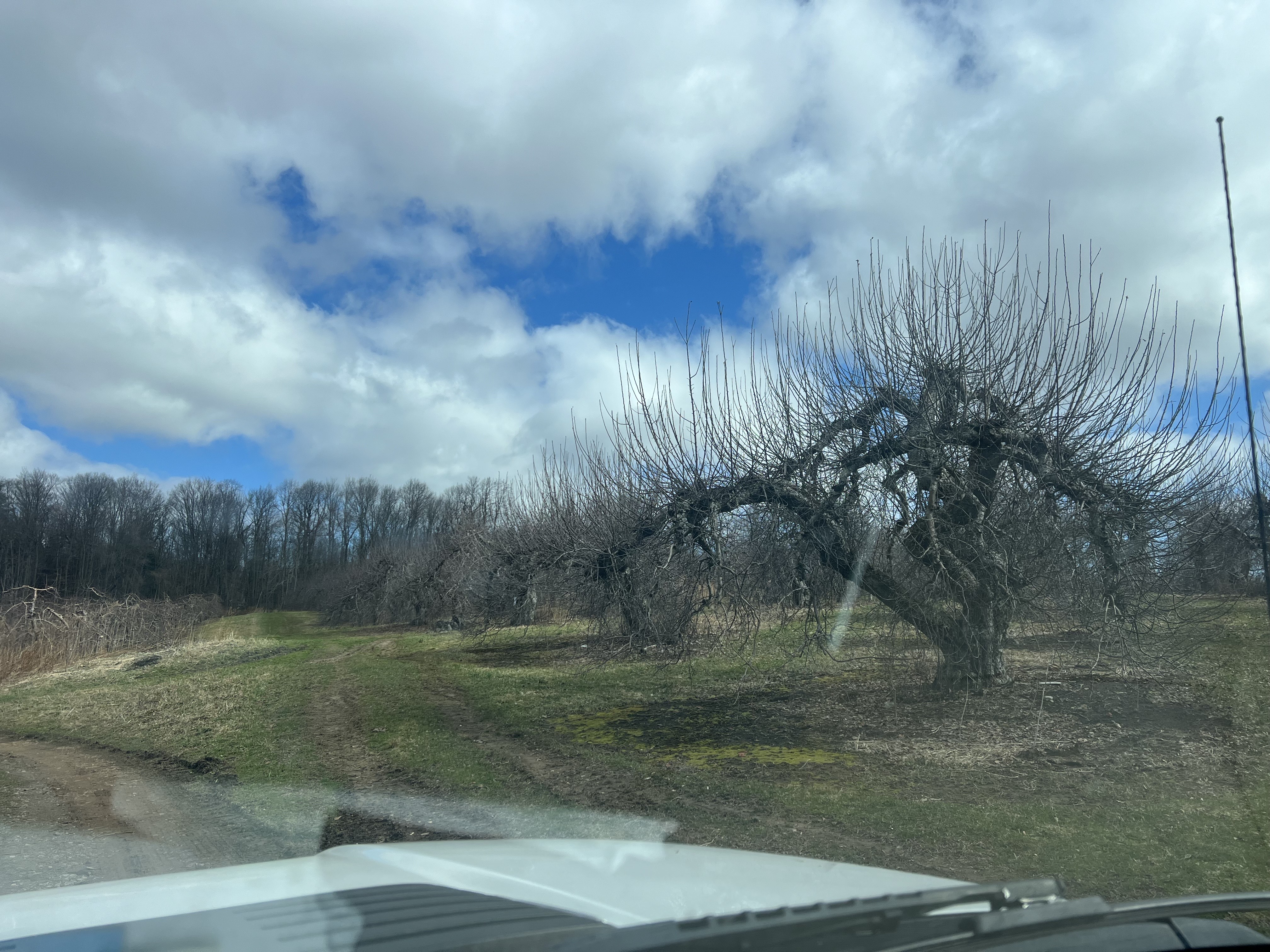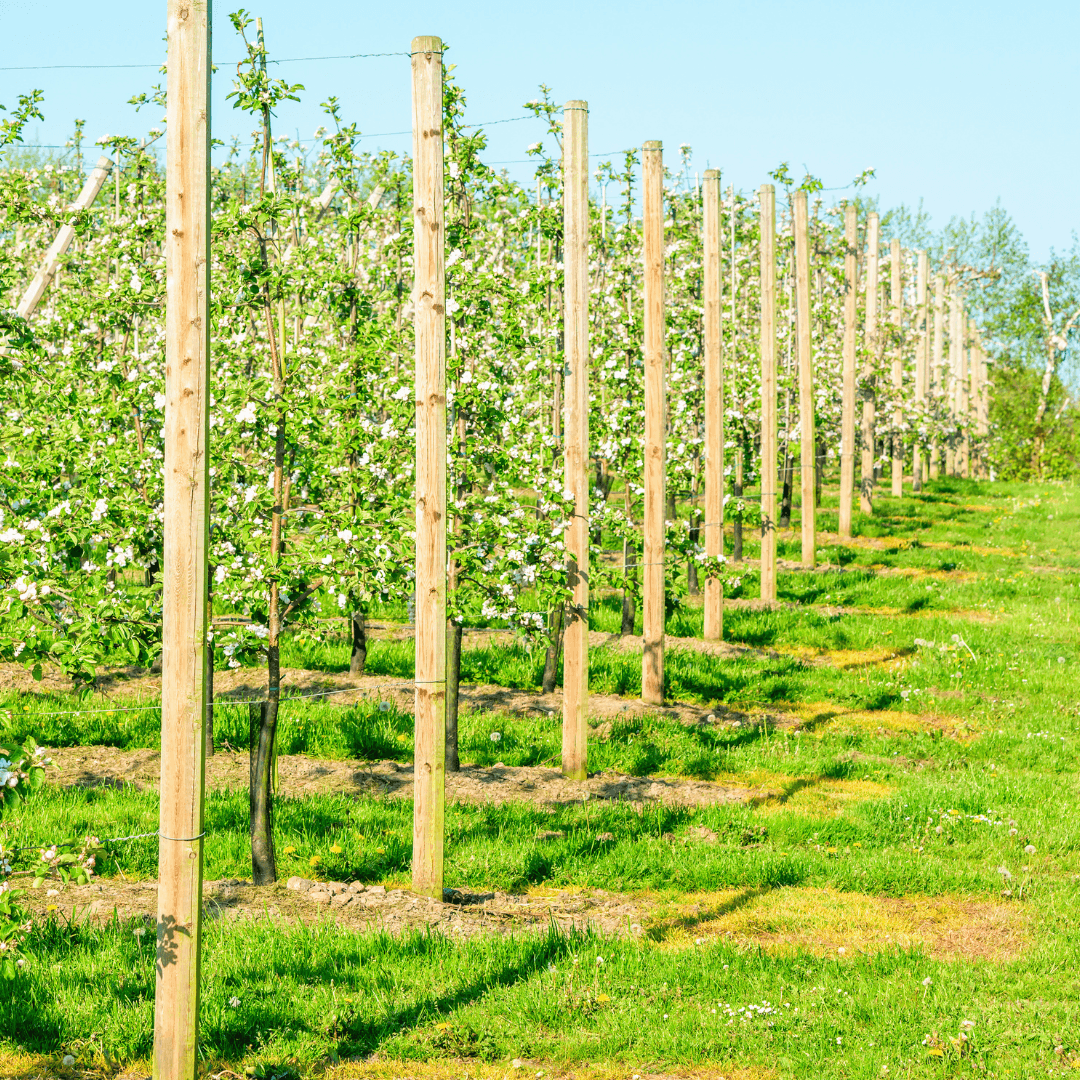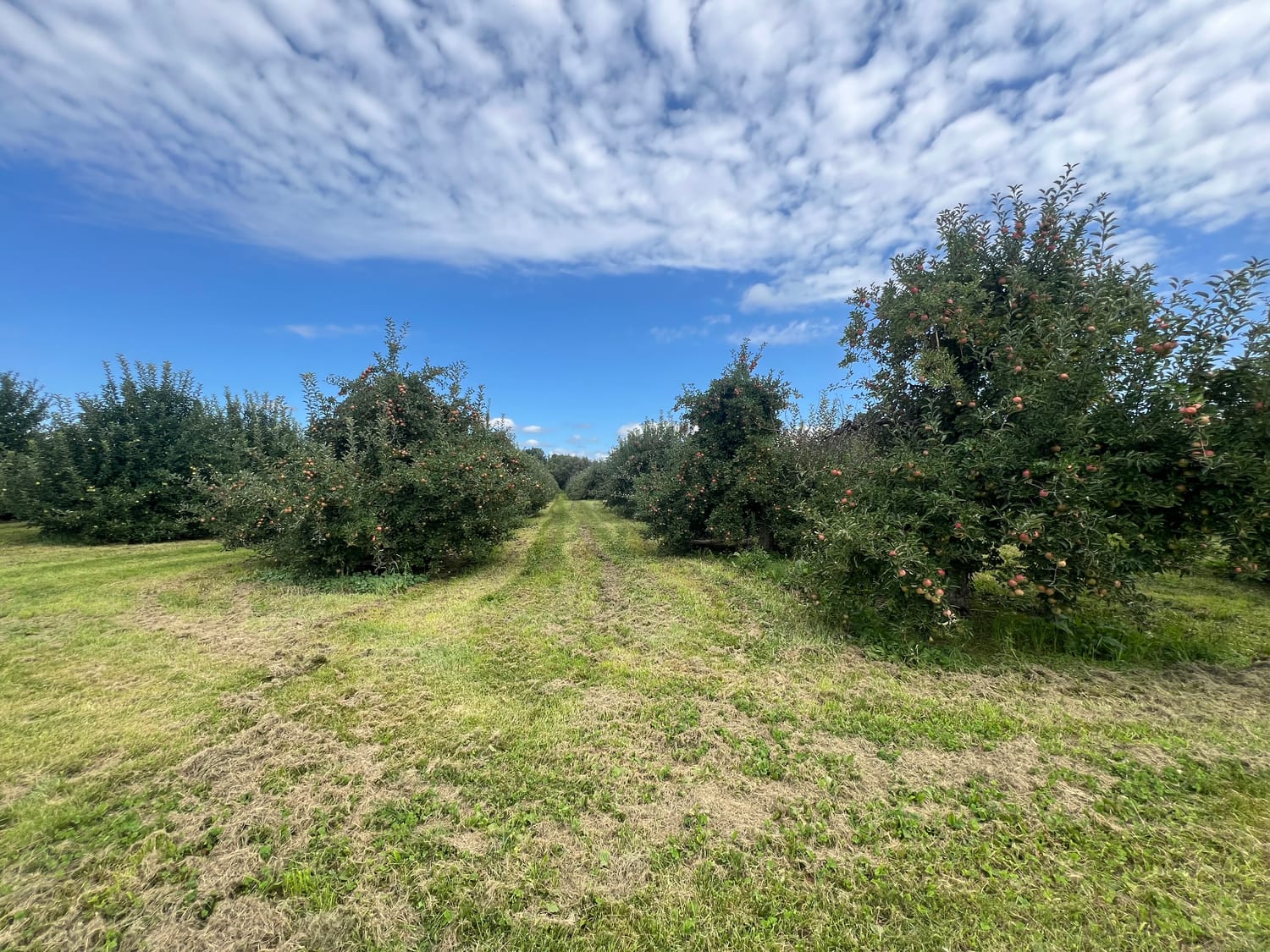The Heritage Advantage:
"True applewood isn't just about the smoke—it's about three centuries of New York orchard tradition creating wood so premium, you can see the difference the moment it arrives."
When professional BBQ operators open a shipment of Logging Specialties applewood, they often comment on the same thing: "These chunks look different." That visual distinction isn't coincidence—it's the culmination of 300+ years of New York State apple-growing heritage, unique growing conditions, and agricultural practices that simply cannot be replicated elsewhere.

The Historical Foundation of Quality
America's Apple Heritage Begins in New York
The story of premium American applewood begins in 1647, when Governor Peter Stuyvesant planted the first apple tree from Holland at the corner of Third Avenue and 13th Street in New York City. The Dutch settlers who established New Netherland (now New York) brought with them centuries of European orchard management expertise, establishing the foundation for what would become America's most sophisticated apple-growing region.
Key Historical Milestones:
1629: Massachusetts Bay Company brings first apple trees to Americas
1647: Peter Stuyvesant plants New York's founding apple tree
1650s: Dutch settlers establish systematic orchard cultivation in New York
1800s: Wayne County emerges as premier apple-growing region
Today: Over 33,000 acres of heritage orchards along Lake Ontario
Why History Matters for BBQ Wood Quality
This isn't just agricultural trivia—it's the foundation of wood quality. Mature orchard systems develop in ways that directly impact the smoking wood they produce:
Soil Development: Three centuries of organic matter decomposition creates uniquely fertile growing conditions that influence wood density and flavor compounds.
Tree Genetics: Heritage varieties and rootstock systems produce fundamentally different wood characteristics than modern, commercially-optimized plantings.
Ecosystem Maturity: Established orchards develop complex soil microbiomes and natural pest management systems that reduce the need for chemical interventions.
The Lake Ontario Microclimate Advantage
Geographic Precision Creates Superior Wood
Wayne County, New York—home to Logging Specialties—sits in a uniquely favorable microclimate created by Lake Ontario's massive thermal mass. This geographic precision creates growing conditions that are nearly impossible to replicate elsewhere.
Climate Specifications:
Growing Season: Extended by 2-3 weeks due to lake effect moderation
Temperature Variation: Reduced daily temperature swings promote consistent growth
Moisture Regulation: Natural humidity from lake evaporation reduces stress
Winter Hardening: Harsh winters create denser wood with concentrated flavor compounds
The Science of Cold-Climate Wood Density
Research from Cornell University's fruit science program demonstrates that cold-climate apple trees develop significantly denser wood fiber structure. During harsh upstate New York winters, trees naturally concentrate growth energy into developing stronger cellular structures to survive temperature extremes that can reach -20°F.
This density translates directly to BBQ performance:
Longer burn times (up to 40% longer than warm-climate wood)
More consistent heat output throughout the burn cycle
Enhanced flavor compound concentration in the wood cells
Reduced ash production due to complete combustion

Heritage Tree Architecture: Why Size Matters
Standard vs. Dwarf: A Critical Distinction
The visual quality difference customers notice immediately stems from a fundamental architectural distinction: New York's heritage orchards primarily feature standard-size apple trees, while most modern commercial operations use dwarf varieties on trellis systems.
Standard-Size Heritage Trees:
Trunk Diameter: 6-24 inches (optimal for chunking)
Tree Height: 25-35 feet at maturity
Root System: Deep, extensive network (15-20 feet)
Lifespan: 50-100+ years of productive growth
Wood-to-Bark Ratio: 80-85% usable heartwood
Modern Dwarf Trees (Common Elsewhere):
Trunk Diameter: 6-24 inches (optimal for chunking)
Tree Height: 25-35 feet at maturity
Root System: Deep, extensive network (15-20 feet)
Lifespan: 50-100+ years of productive growth
Wood-to-Bark Ratio: 80-85% usable heartwood

The Contamination Problem with Trellis Systems
Modern apple growing increasingly relies on high-density plantings with wire support systems. While efficient for fruit production, these systems create significant problems for BBQ wood:
Wire Contamination Issues:
Metal wire becomes embedded in growing wood
Creates safety hazards in commercial wood processing
Produces inferior chunks with visible wire remnants
Compromises the clean burn characteristics essential for premium BBQ
Logging Specialties Advantage: Our heritage orchards feature free-standing trees with no wire support systems, ensuring absolutely clean wood that meets the highest commercial food service standards.
The Density Difference: Measurable Quality
Scientific Testing Validates Visual Observations
Independent testing by wood science laboratories consistently shows New York heritage applewood demonstrates 15-20% higher density compared to applewood from warm-climate regions or young orchard systems.
Density Testing Results (Average Specific Gravity):
NY Heritage Applewood: 0.68-0.72
Warm Climate Applewood: 0.58-0.64
Young Orchard Wood: 0.55-0.62
What This Means Practically:
Extended burn time: Denser wood burns slower and more consistently
Enhanced flavor transfer: More concentrated aromatic compounds
Better heat retention: Maintains optimal smoking temperatures longer
Reduced waste: Higher percentage of usable wood per log
Sustainable Harvesting: The Natural Cycle
Orchard Management Drives Quality
The premium quality of Logging Specialties applewood results directly from sustainable orchard management practices that align with natural agricultural cycles:
Harvest Timing Protocol:
October-March: Apple fruit harvested, trees enter dormancy
Orchard Assessment: Identify trees with declining productivity
Selective Removal: Harvest older trees to make room for new plantings
Wood Processing: Fresh wood processed immediately for optimal moisture content
Replanting: New heritage varieties planted in cleared areas
This cycle ensures:
Peak wood quality (harvested during dormancy when sap content is minimal)
Environmental sustainability (natural forest management)
Orchard productivity (continuous renewal maintains yield)
Economic viability (nothing goes to waste)
Processing Excellence: From Tree to Chunk
Professional-Grade Specifications
The visual quality customers immediately notice reflects precision processing standards developed over decades of BBQ industry experience:
Cutting Specifications:
Chunk Size: Precisely cut 2-3 inches for optimal surface area
Moisture Content: Professionally seasoned to 15-20%
Bark Removal: Selective processing minimizes bark content
Quality Grading: Each batch inspected for consistency
Processing Timeline:
Day 1: Tree harvest and initial processing
Weeks 2-8: Controlled seasoning under cover
Week 9: Final cutting and quality inspection
Week 10: Packaging and shipping
This controlled process ensures that every chunk meets commercial kitchen standards for consistency, cleanliness, and performance.
Processing Excellence: From Tree to Chunk
Professional-Grade Specifications
The visual quality customers immediately notice reflects precision processing standards developed over decades of BBQ industry experience:
Let us know what you think in the comments!
YOU MIGHT ALSO LIKE
Categories
Newsletter
Subscribe to the newsletter and stay in the loop! By joining, you acknowledge that you'll receive our newsletter and can opt-out anytime hassle-free.
Created with ©systeme.io







